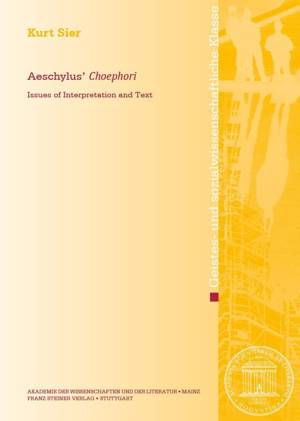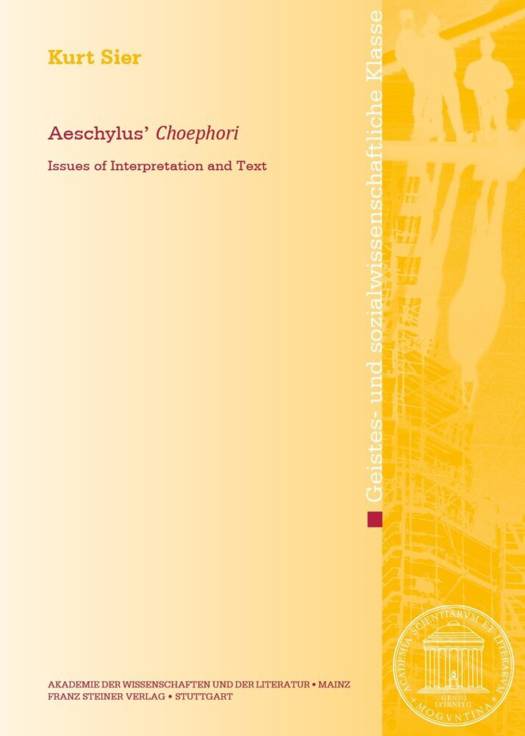
Je cadeautjes zeker op tijd in huis hebben voor de feestdagen? Kom langs in onze winkels en vind het perfecte geschenk!
- Afhalen na 1 uur in een winkel met voorraad
- Gratis thuislevering in België vanaf € 30
- Ruim aanbod met 7 miljoen producten
Je cadeautjes zeker op tijd in huis hebben voor de feestdagen? Kom langs in onze winkels en vind het perfecte geschenk!
- Afhalen na 1 uur in een winkel met voorraad
- Gratis thuislevering in België vanaf € 30
- Ruim aanbod met 7 miljoen producten
Zoeken
Aeschylus' 'Choephori
Issues of Interpretation and Text
Kurt Sier
Paperback | Duits | Abhandlungen der Akademie der Wissenschaften und der Literatur, Mainz. Geistes- und sozialwissenschaftliche Klasse | nr. 2024
€ 14,95
+ 29 punten
Uitvoering
Omschrijving
Choephori (or Libation Bearers) is the second play of Aeschylus' Oresteia. It was the main reference point for the Electras of Sophocles and Euripides and may be called the archetype of all later dramatizations of Orestes' matricide. But while Choephori can be considered the most influential part of the tragic trilogy in terms of theater history, it is also, paradoxically, the worst preserved of the three plays, its text resting upon a single medieval manuscript and being corrupt in many places. This is one of the reasons why the drama continues to be controversial to an extent that even by, Aeschylean' standards seems exceptional. Although there is a vast amount of literature devoted to the Oresteia and there are excellent contributions dealing with its middle play, very many of the problems occurring in Choephori are still unsettled. The present study does not focus on general themes (e.g. justice, gender, intertextuality), albeit such topics will necessarily arise in the course of the argument, nor does it claim to give a new overall interpretation. Rather, it intends to discuss questions concerning structure and performance and to address a number of issues that seem important for understanding the play.
Specificaties
Betrokkenen
- Auteur(s):
- Uitgeverij:
Inhoud
- Aantal bladzijden:
- 68
- Taal:
- Duits
- Reeks:
- Reeksnummer:
- nr. 2024
Eigenschappen
- Productcode (EAN):
- 9783515138222
- Verschijningsdatum:
- 9/10/2024
- Uitvoering:
- Paperback
- Formaat:
- Trade paperback (VS)
- Afmetingen:
- 170 mm x 239 mm
- Gewicht:
- 149 g

Alleen bij Standaard Boekhandel
+ 29 punten op je klantenkaart van Standaard Boekhandel
Beoordelingen
We publiceren alleen reviews die voldoen aan de voorwaarden voor reviews. Bekijk onze voorwaarden voor reviews.









